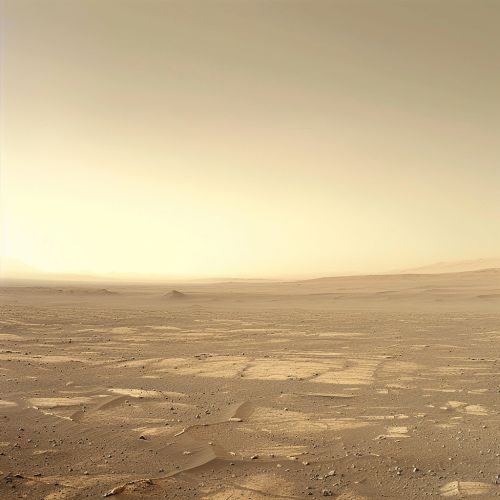Terraforming of Mars
Introduction
Terraforming of Mars refers to the hypothetical process of deliberately modifying the atmosphere, temperature, surface topography or ecology of the planet Mars to be similar to those of Earth, making it habitable for Earth-like life. The concept of terraforming Mars has been a staple of science fiction for decades and is also taken seriously by scientists, despite the enormous challenges and potential risks involved.
Scientific Basis
The idea of terraforming Mars is based on the assumption that it is possible to alter the planet's current harsh conditions to make it more Earth-like. The planet's thin atmosphere, composed primarily of carbon dioxide, offers little protection from solar radiation. The average temperature on Mars is about -80 degrees Fahrenheit, much colder than Earth's average. Furthermore, Mars lacks a global magnetic field, which on Earth protects life from harmful solar and cosmic radiation.
Challenges and Potential Solutions
Terraforming Mars would involve overcoming several significant challenges. These include the planet's thin atmosphere, its lack of a magnetic field, its low temperatures, and its lack of liquid water.
Atmospheric Modification
One of the primary challenges in terraforming Mars is its thin atmosphere, which is about 100 times less dense than Earth's. This thin atmosphere results in a lack of sufficient pressure to support liquid water at the Martian surface. To address this, scientists have proposed various methods to thicken the Martian atmosphere.
One such method involves the release of greenhouse gases, such as carbon dioxide, to trap heat and raise the planet's temperature. This could be achieved through industrial activity, such as the operation of factories that emit greenhouse gases. Another method involves the use of mirrors in space to reflect sunlight onto the Martian poles, causing the frozen carbon dioxide there to sublimate and thicken the atmosphere.


Magnetic Field Generation
Another major challenge is Mars' lack of a global magnetic field, which on Earth protects life from harmful solar and cosmic radiation. To address this, scientists have proposed creating an artificial magnetic field. This could be achieved by placing a large magnetic shield at the Mars-Sun L1 Lagrange Point, a location in space where the gravitational forces of Mars and the Sun balance the centrifugal force felt by a small object, like a satellite. This shield would deflect solar wind, protecting Mars from solar radiation and helping to prevent the loss of its atmosphere.
Temperature Increase
The average temperature on Mars is much colder than that of Earth, making it inhospitable for Earth-like life. To increase the planet's temperature, scientists have proposed various methods, such as the release of greenhouse gases mentioned earlier. Another method involves the use of mirrors in space to reflect sunlight onto the Martian surface, increasing its temperature.
Water Availability
Mars currently lacks liquid water, a necessity for Earth-like life. To address this, scientists have proposed various methods to introduce water to the Martian surface. One method involves the importation of water from Earth or other bodies in the solar system, such as comets. Another method involves the extraction of water from the Martian soil or the polar ice caps.
Ethical Considerations
The terraforming of Mars raises several ethical considerations. These include the potential harm to any existing Martian life, the risk of unintended consequences, and the question of who should decide whether to terraform Mars.
Future Prospects
While the terraforming of Mars is currently beyond our technological capabilities, it remains a topic of active research and discussion. As our understanding of Mars and our technological capabilities continue to advance, the possibility of terraforming Mars may become more feasible.
